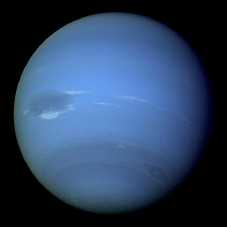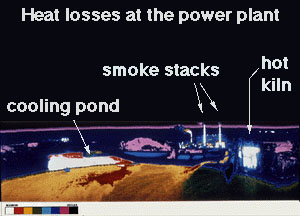Exploratour - Life in the Solar System
The air of Neptune is extremely cold, with temperatures of -270 degrees to -380 degrees. The air is made of complex molecules, the same sort of molecules that we see coming out of cars on earth in the form of smog. Energy in the atmosphere comes from lightning, ultraviolet light, and charged particles.
This kind of atmosphere is very similar to the kind of environment in which scientists believe life began. But from prehistoric times until today, life on Earth changed, and now these conditions are no longer friendly for life as we know it.
The inside of Neptune is very hot and liquid-like, but the temperature is as high as 10,000 degrees.
Overall, the environment of Neptune sounds very unfriendly to life as we know it on earth.
This is page 11 of 20












